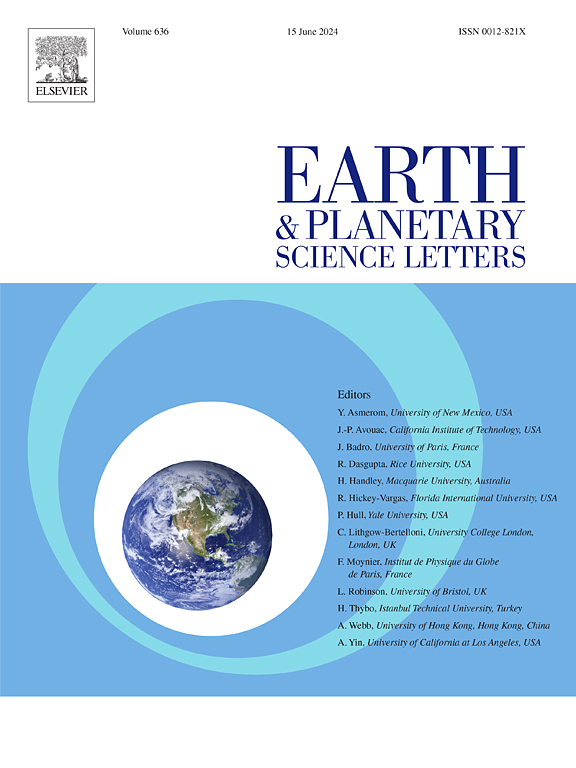Eastern equatorial Pacific paleo-productivity and carbon cycling during the late Pleistocene
IF 4.8
1区 地球科学
Q1 GEOCHEMISTRY & GEOPHYSICS
引用次数: 0
Abstract
A classical paradigm links enhanced marine biological production and resulting deep ocean carbon storage in the low latitude Pacific with reduced atmospheric CO2 concentrations during Pleistocene ice ages. Subsequent studies of eastern equatorial Pacific paleo-productivity and associated processes do not unanimously characterize this system. Here, we present paleo-records of export production, sediment mass flux, dust flux, and bottom water oxygen derived from isotopes of U, Th, and Pa in marine sediments and synthesize existing paleo-records from a site in the eastern equatorial Pacific cold tongue over the last 160,000 years. Our results support the hypothesis that variations in marine export production were a consequence of changes in equatorial upwelling and in the nutrient concentrations of upwelled waters, not aeolian iron fertilization. We conclude that changes in marine export production in the eastern equatorial Pacific were not the principal driver of changes in local deep ocean carbon storage or atmospheric CO2 across the late Pleistocene.
求助全文
约1分钟内获得全文
求助全文
来源期刊

Earth and Planetary Science Letters
地学-地球化学与地球物理
CiteScore
10.30
自引率
5.70%
发文量
475
审稿时长
2.8 months
期刊介绍:
Earth and Planetary Science Letters (EPSL) is a leading journal for researchers across the entire Earth and planetary sciences community. It publishes concise, exciting, high-impact articles ("Letters") of broad interest. Its focus is on physical and chemical processes, the evolution and general properties of the Earth and planets - from their deep interiors to their atmospheres. EPSL also includes a Frontiers section, featuring invited high-profile synthesis articles by leading experts on timely topics to bring cutting-edge research to the wider community.
 求助内容:
求助内容: 应助结果提醒方式:
应助结果提醒方式:


